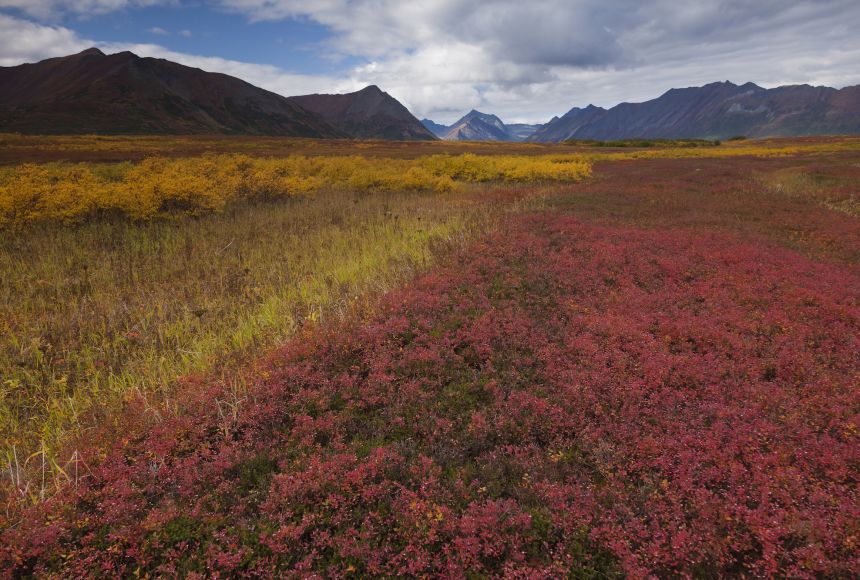Tundras are among the world's coldest, harshest biomes, with extreme temperatures and low rainfall. But these environments in the Arctic and on mountains are far from invulnerable, displaying sensitivity to human disruptions and climate change.
Home to animals including Arctic foxes (Vulpes lagopus), polar bears (Ursus maritimus), gray wolves (Canis lupus), caribou (Rangifer tarandus), snow geese (Anser caerulescens), and musk oxen (Ovibos moschatus), the Arctic tundra is changing in broad and somewhat unpredictable ways as global average temperatures rise. Its underlying base of frozen soil and plant matter, called permafrost, is thawing. That is turning the tundra into a source of greenhouse-gas emissions, as soil microbes convert carbon into carbon dioxide and methane. The tundra is also slow to repair itself from physical disturbances, such as tire tracks from heavy vehicles.
Climate Change
A warmer climate could radically change tundra landscapes and what species are able to live in them. Warming creates potential feedback loops that encourage further destabilization of tundra ecosystems. The release of methane from deteriorating permafrost, for example, feeds the thawing cycle, while higher temperatures drive the growth of shrubs, which can change soil temperature and prevent snow from reflecting out heat.
Thriving shrubs also crowd out lichen, an important food source for caribou and other animals. Warmer tundras could also see increased risk of wildfires and drought—scientists have documented a significant disappearance of lakes in western Greenland between 1969 and 2017.
Air Pollution
Air pollution affects tundra environments in different ways. A recent study found that Arctic clouds are particularly sensitive to air pollution, which spurs cloud formation and has a blanketing effect. Black carbon from diesel engines, fires, and other combustion can settle on snow, decreasing its ability to reflect sunlight and causing faster melting.
Chemicals used in coolants and aerosol sprays have driven ozone depletion at the North and South Poles, which can let in stronger ultraviolet light rays. And toxic mercury, sent into the atmosphere by coal-burning and industrial activity, is accumulating in the Arctic tundra, threatening both humans and animals who live in the region. Air pollution can also harm or kill the important food source of lichen.
Industrial Activity
The oil, gas, and mining industries can disrupt fragile tundra habitats. Drilling wells can thaw permafrost, while heavy vehicles and pipeline construction can damage soil and prevent vegetation from returning. This activity also increases the risk of toxic spills. Seismic testing for oil and gas operations in the 1980s left tracks on the tundra that are still visible decades later.
Invasive and Migrating Species
Climate change is driving down populations of some Arctic tundra natives, such as caribou (also known as reindeer), by fostering an increase in parasites and disease while damaging food sources. But other species, such as shrubs and the wolf spider (Lycosidae spp.), are thriving.
The red fox (Vulpes vulpes), which is typically found farther south, is moving north onto the tundra and competing with the Arctic fox for food and territory. Though few invasive species have yet to take root in the Arctic, climate change increases the risk this could happen. And human activity, both near and far, can change the balance: As snow geese have learned to feed on farmlands rather than in the wild on their migration routes, their exploding numbers have threatened to degrade their tundra nesting sites.
Solutions
Cutting harmful, planet-warming pollution by switching away from fossil fuels is key to safeguarding Earth's tundra habitats. Other measures include creating refuges and protections for certain species and regions while limiting or banning industrial activity. The Arctic Council, an intergovernmental forum of Arctic countries, has also established a working group to study and prevent the spread of invasive species in the region.
